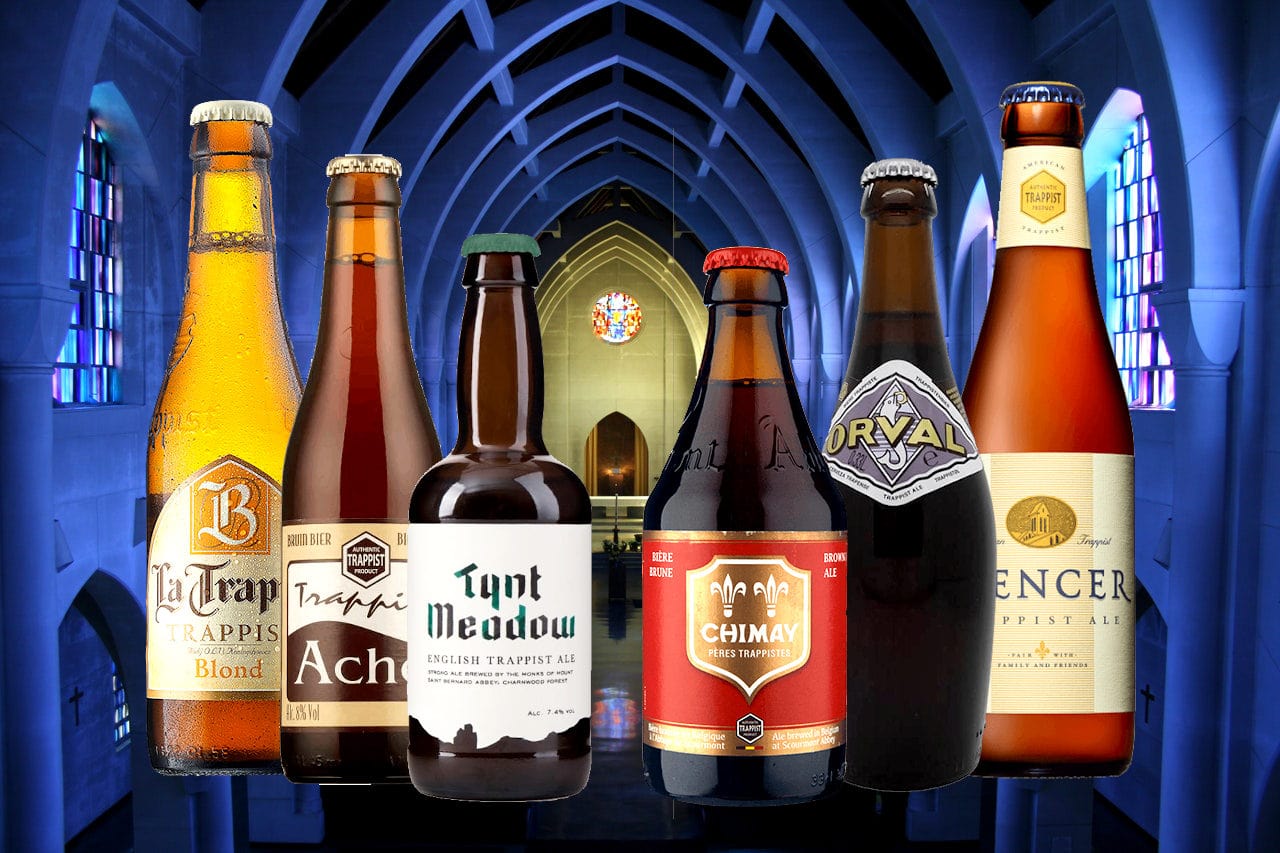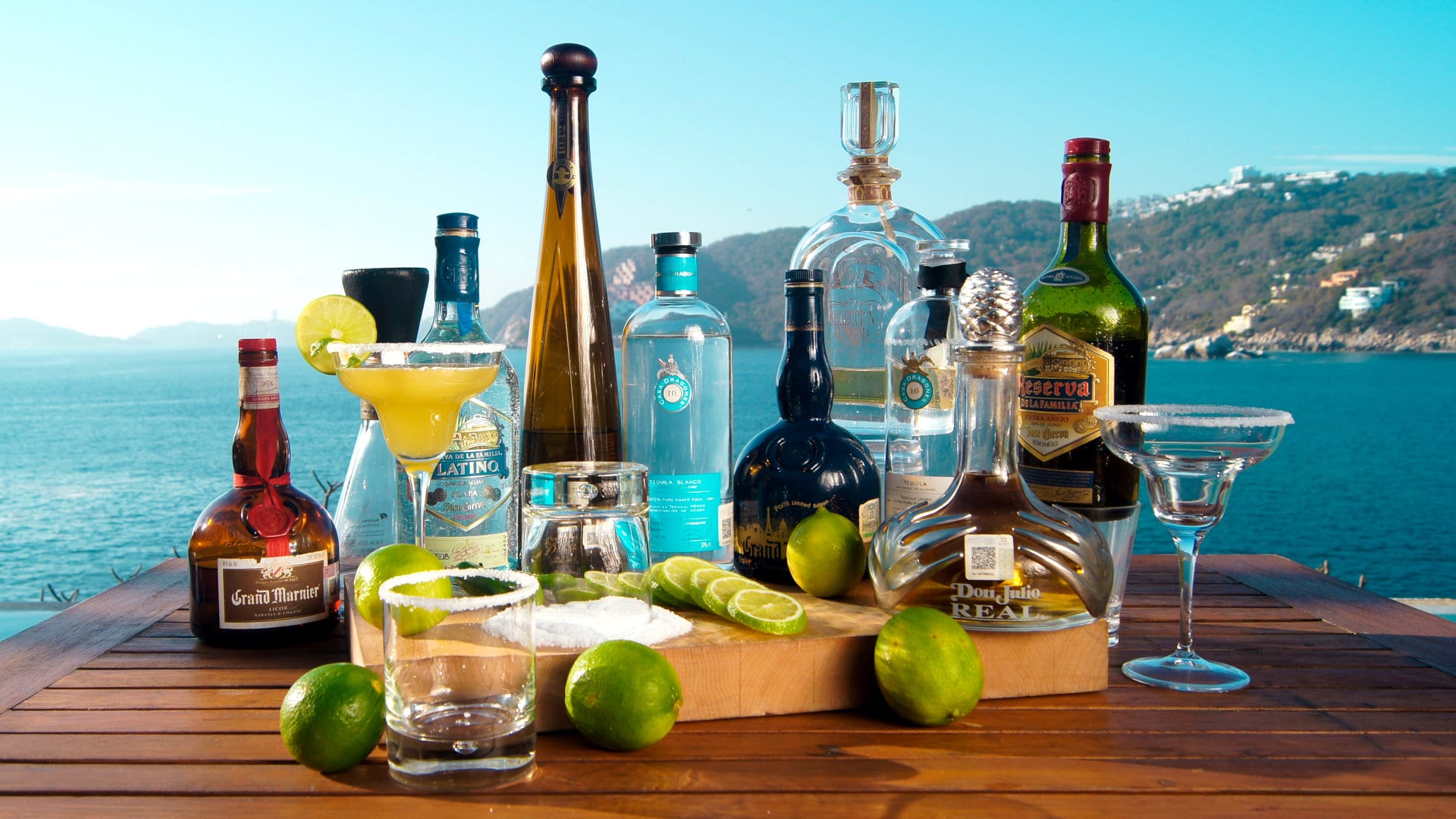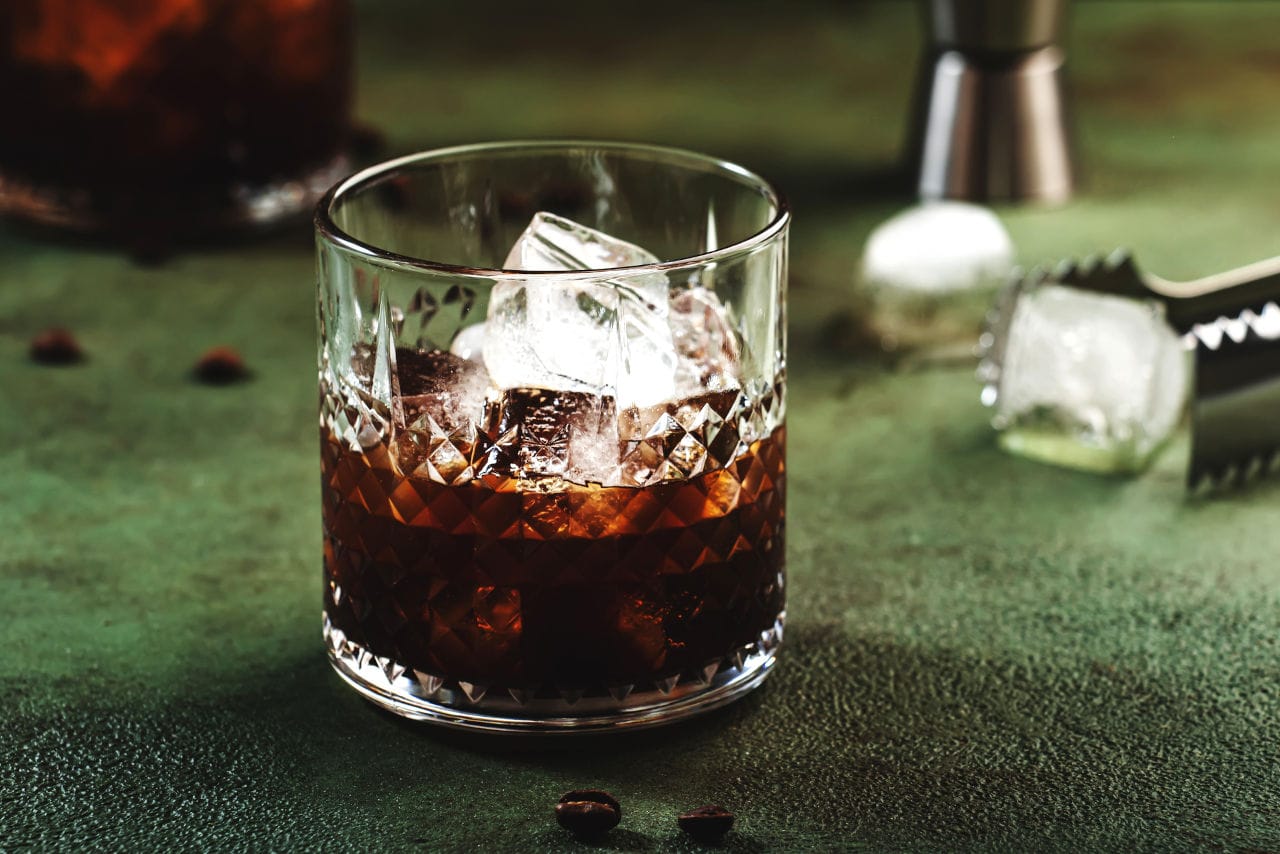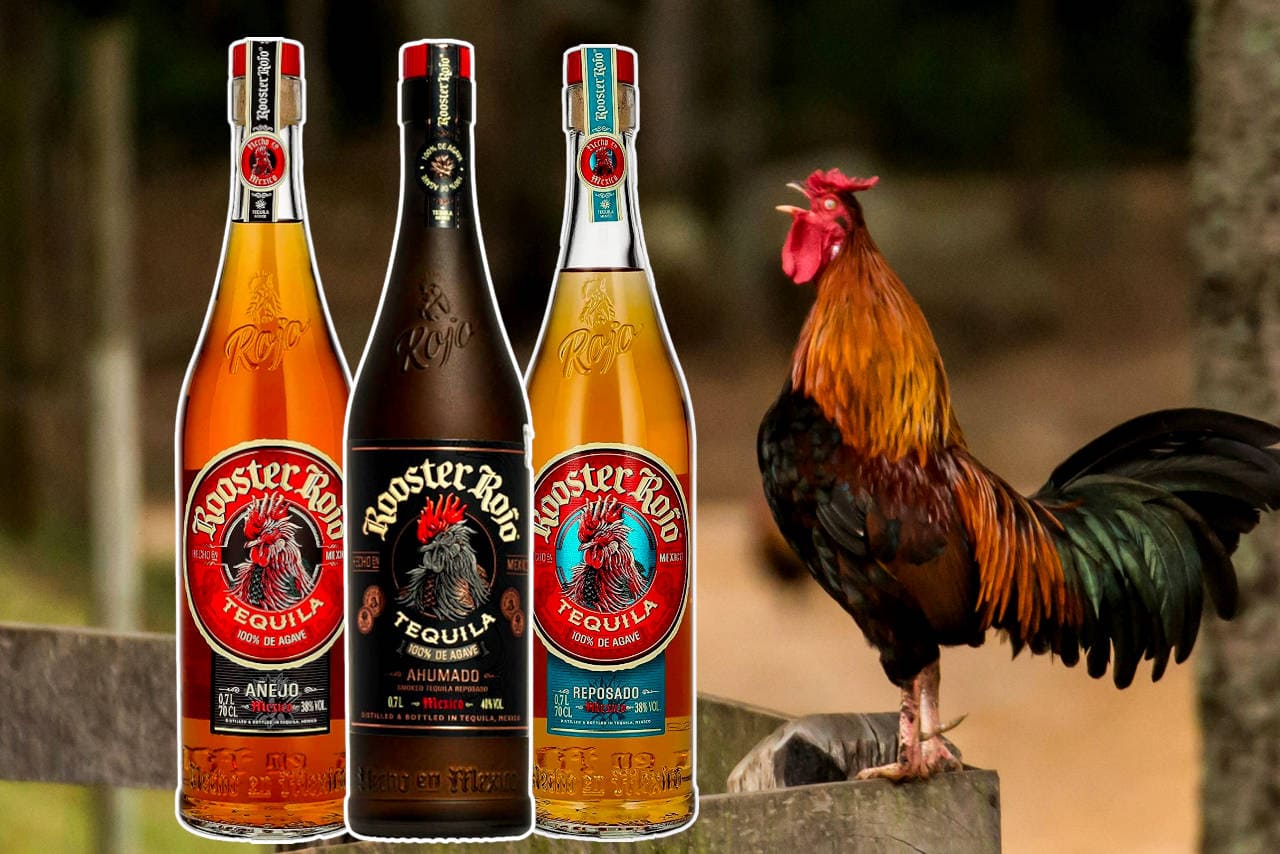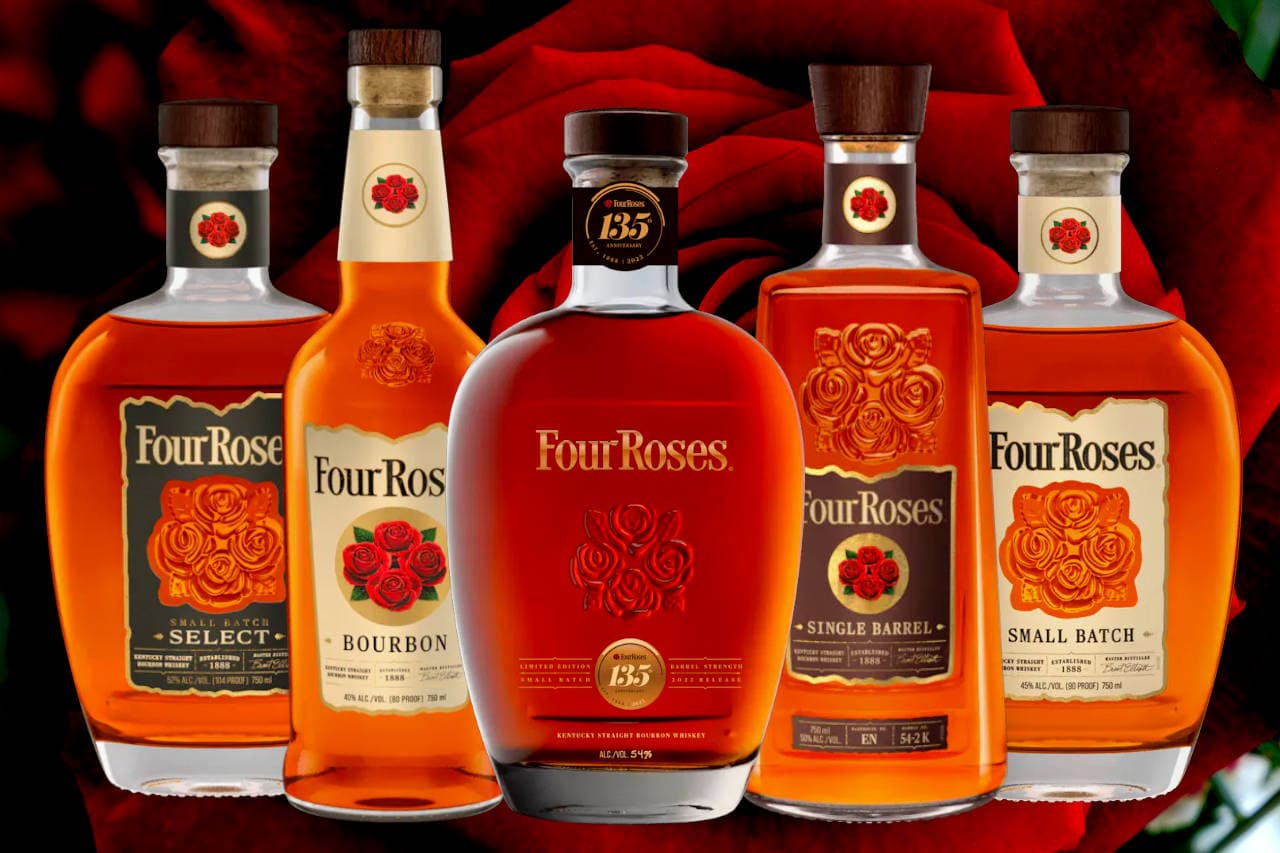Trappist monks have been producing high-quality beer made from locally sourced natural ingredients for centuries. Many of the best Trappist beers have had their brewing process meticulously refined over hundreds of years to produce something truly special.
My recent trip with Ingrid to the beautiful city of Bruges in Belgium saw us visit the underground cellar of Le Trappiste to try some Trappist beers. This bar specialises in unusual Trappist beers and is located in an 800-year-old medieval cellar in the centre of Bruges and is well worth a visit.

Top 10 Best Trappist Beers
I’ve selected the best Trappist beers available that combine quality ingredients with Trappist brewing expertise to produce a beer with incredible taste and depth. Here are 10 phenomenal Trappist beers for your consideration.
1. Tynt Meadow Trappist Ale
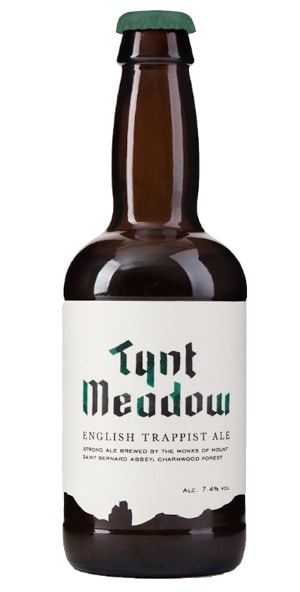
Overview
- Distiller: Mount Saint Bernard Abbey
- ABV: 7.4% (14.8 Proof)
- Country: England
- Colour: Mahogany
Review
Living by the rules of Saint Benedict, the monks at Mount Saint Bernard Abbey in Leicestershire believe in prayer and hard work. As the monks receive no funds from the church for their living expenses or to maintain their historic buildings, beer-making is one of many traditions that provide an income.
Tynt Meadow Trappist Ale is brewed from hops and barley and twice fermented. The first fermentation is in the fermentation tank, and further fermentation occurs inside the bottle. The finished product is a deep mahogany-coloured ale that produces a 3 finger head.
The design of the label takes inspiration from a twelfth-century Cistercian script that was developed by Brother Anselm Baker, who was one of the earlier monks in the community.
On The Nose
Fresh, fruity notes and hints of dark chocolate.
On The Palate
Begins cleanly with deep fruity notes combined with dark chocolate. Mid-palate reveals barley, hops, liquorice and dried fruits. The finish is long and smooth with the trailing spice of pepper and subtle sweetness of fig.
Summary
Tynt Meadow Trappist Ale is a clean and complex ale with rich notes of dried fruits and dark chocolate.
2. Chimay Blue Trappist Beer
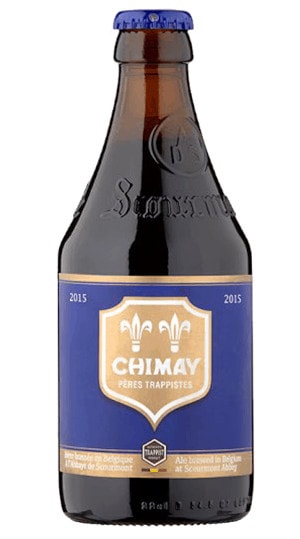
Overview
- Distiller: Scourmont Abbey
- ABV: 9% (18 Proof)
- Country: Belgium
- Colour: Copper
Review
Scourmont Abbey was established by a group of monks in 1850 who settled in Scourmont near Chimay. The monastery concentrated on farming, and cheese production, and also began brewing beer. The non-profit Chimay-Wartoise Foundation was created in 1996 to maintain and develop the cheese factory and brewery.
Chimay Blue Trappist Beer is brewed by the monks using local well water located within the walls of Scourmont Abbey. There have been whispers that the ale is actually baptised by the monks. However, this seems to be an urban legend. Copper-coloured when poured and produces a 2-finger head.
On The Nose
Sweet fruits, malt, and banana. Also has a slight bread aroma.
On The Palate
Begins somewhat sweetly with notes of toffee-banana and molasses. Mid-palate introduces some welcome spice in the form of cloves and pepper, along with smooth malt. The finish is ultra-smooth and creamy.
Summary
Chimay Blue Trappist Beer is dark, intense, and complex, with rich notes of toffee, molasses and clove that dance on the palate. It’s similar to some of the pale ales that pair with Indian food I recently reviewed.
3. Westmalle Tripel
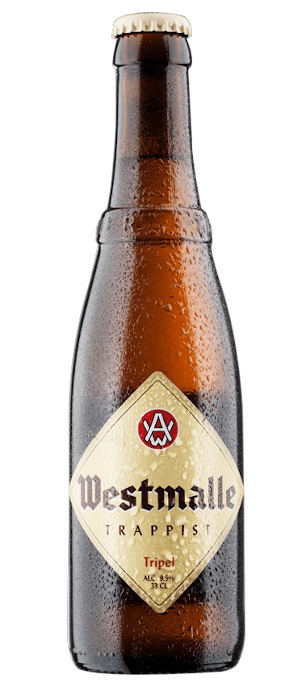
Overview
- Distiller: Westmalle Abbey
- ABV: 9.5% (19 Proof)
- Country: Belgium
- Colour: Deep golden yellow
Review
Westmalle Abbey was founded in 1794 by monks of the Order of Cistercians of the Strict Observance and granted abbey status in 1836. Its full title is Abbey of Our Lady of the Holy Heart of Westmalle.
The monks of Westmalle Abbey dedicated their lives to prayer, contemplation and hard work, following a strict daily schedule. The monks brew beer and make cheese (among many other tasks) to fund the costs of their lives and also for charity and social projects.
Westmalle Tripel was first brewed in 1934 and is known as the ‘mother of all tripels’. In 1956 the recipe was slightly altered yet remains the same to this day. One interesting fact is this ale is slow fermented and even re-ferments in the bottle. This beer is deep golden yellow and produces a 2-finger head.
On The Nose
Ripe banana, caramel, pepper and hops
On The Palate
Begins slightly bitter with notes of black cracked pepper and yeast. Mid-palate becomes fruitier and sweeter with ripe orchard fruits and bananas. The finish is smooth, dry, and full-bodied, with notes of malt barley and caramel.
Summary
Westmalle Tripel is a full-bodied malt barley ale that although strong, the overall experience is smooth from start to finish.
4. Chimay Red Trappist
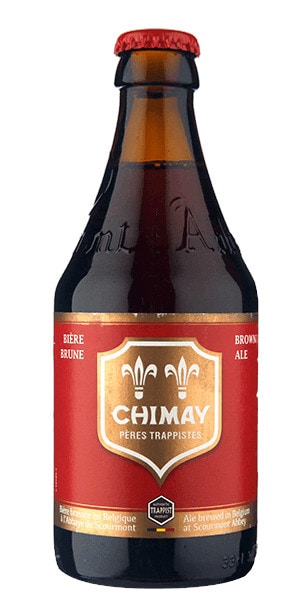
Overview
- Distiller: Scourmont Abbey
- ABV: 7% (14 Proof)
- Country: Belgium
- Colour: Dark copper/plum
Review
The Trappist monks have been resident at the Scourmont Abbey near Chimay since 1850. Beer brewing, along with cheese making and farming has been a long tradition. All profits fund the monks living costs, and any surplus is used in the community vie the non-profit Chimay-Wartoise Foundation.
Chimay Red Trappist Beer is the oldest of all the Chimay beers and brewed within the monastery. This is a dark and fruity ale that makes an excellent complainant with meats and fish. When poured, the colour is a deep copper/plum and produces a single finger thickness head.
On The Nose
Apricots, malt and toffee. Slightly bready.
On The Palate
Begins with malt, brown sugar, and smooth caramel. The mid-palate is enjoyable when cinnamon and soft plum and pear notes appear, with almond soon after. The finish is long and creamy with a welcome nip of spice.
Summary
Chimay Red Trappist Beer is a vibrant and full-bodied beer with soft fruits, brown sugar and cinnamon. Delicious.
5. Rochefort 10 Trappist Beer
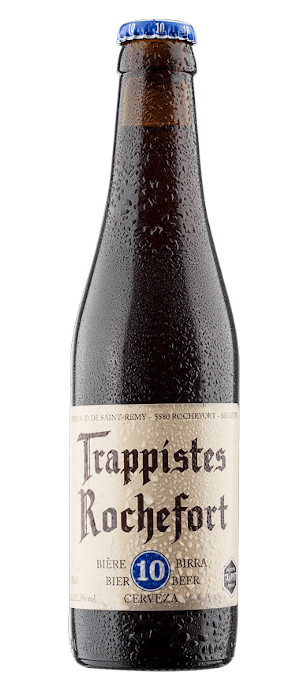
Overview
- Distiller: Rochefort Abbey
- ABV: 11.3% (22.6 Proof)
- Country: Belgium
- Colour: Deep brown
Review
Rochefort Abbey (The Abbey of Our Lady of Saint-Remy) is steeped in history, dating back to 1230 when originally founded as a convent. In 1464 Rochefort saw the arrival of Cistercian monks who made Rochefort Abbey their home.
Records show that brewing has been a part of Rochefort Abbey life since 1595. In 1952 the brewery was completely renovated and modernised
Rochefort 10 Trappist is made from two malts, caramel malt and pilsner malts combined with Rochefort’s own yeast. The creation is a rich, dark and malty, full-bodied beer that has quite a kick. Produced a two-fingered head.
On The Nose
Brown sugar, molasses, and dark dried fruits.
On The Palate
Opens with sweet molasses, malt and a slightly yeasty twang. The mid-palate is rich with dark fruits, brown sugar, and spices. Even orange flavoured dark chocolate makes a welcome appearance. The finish is smooth but boozy, with touches of caramel entwined with more warming spices.
Summary
Rochefort 10 Trappist beer is complex, rich and packed with flavour for an almost decadent experience. A must-try, especially with cheese or chocolate.
6. La Trappe Blond Ale
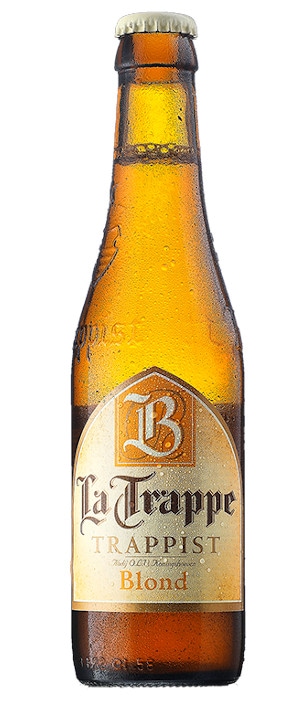
Overview
- Distiller: Koningshoeven brewery
- ABV: 6.5% (13 Proof)
- Country: Netherlands
- Colour: Blonde/Light gold
Review
The monks of the Cistercian Abbey of Onze Lieve Vrouw van Koningshoeven have been brewing La Trappe Ale since 1884. As with all authentic Trappist beers, La Trappe is brewed within the walls of the Abbey and supervised by the monks, with part of the profits funding good causes.
La Trappe Blond Ale is made only from natural beer ingredients; barley, hops, yeast and local spring water. As the bottles are filled with beer, some remaining sugar and yeast cause La Trappe to continue to ferment in the bottles that are stored in a heated chamber for the second fermentation. When poured, La Trappe Blond Ale produces a 2 finger head.
On The Nose
Fresh with citrus fruits combined with the sweet-spicy aroma of malt
On The Palate
Opens with fresh orange, lemon and overripe banana. The mid-palate reveals yeast and vanilla with a subtle creaminess. The finish is long, smooth, yet has a light bitterness that lingers.
Summary
La Trappe Blond Ale is a light, refreshing, and well-balanced Trappist beer that is not overly complex. Perfect for the spring and summertime.
7. Achel 8 Bruin
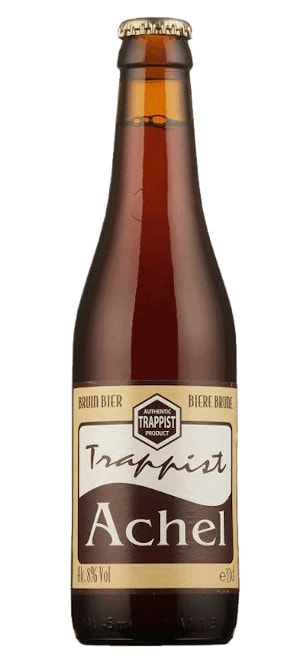
Overview
- Distiller: Achel Abbey
- ABV: 8% (16 Proof)
- Country: Belgium
- Colour: Dark brown
Review
The brewery building of the Achel Abbey dates back to 1648; However, it was not until 1871 did the site become a Trappist monastery. World War I saw the dismantling of the brewery by the Germans and was not rebuilt until 1998 when beer brewing resumed.
Achel 8 Bruin is brewed using 100% natural ingredients. Only spring water, barley malt, hops and yeast are used with no additional spices. The beer is a deep dark brown and produces a 2 finger head once poured.
On The Nose
Malty and fruity with notes of sweet dates, raisins, and other dried fruits
On The Palate
A relatively smooth start but soon builds to reveal a profound combination of hops, sweet dried fruits, brown sugar, and hints of orange. Mid-palate is spiced-banana and burnt caramel. The finish is thick and flavoursome, with a long trail of bittersweet fruits.
Summary
Achel 8 Bruin is a dark, earthy, and fruity Trappist beer that has incredible depth. Perfect for sipping by the fire in the colder autumn/winter months.
8. Orval Trappist Belgian Beer

Overview
- Distiller: Brasserie d’Orval
- ABV: 8% (16 Proof)
- Country: Belgium
- Colour: Dark brown
Review
The Orval Trappist brewery is located within the walls of the Abbaye Notre-Dame d’Orval in Belgium. The Abbey dates back to 1628, although the current brewery was built in 1931, producing their outstanding Orval Trappist Belgian Beer that has remained unchanged since then.
Orval Trappist beer is regarded by many to be the finest Trappist beer available. Beer critic Michael Jackson commented that Orval was a “world classic”. It is dark brown in colour and produces a foaming 3 fingered head.
On The Nose
Ripe orchard fruits, spices, ripe banana, and vanilla
On The Palate
The opening is slightly bitter and dry with notes of hops, apple, and pear all lightly dusted with pepper. Mid-palate becomes smoother and sweeter with caramel tones that are almost biscuit-like. The finish is smooth, mildly yeasty with a slight bitterness.
Summary
Orval is a highly complex and full-bodied beer with a fruity bitterness that really stands out. Highly recommended.
9. Spencer Trappist Ale

Overview
- Distiller: Spencer Brewery
- ABV: 6.5% (13 Proof)
- Country: USA
- Colour: Golden
Review
Spencer Abbey was founded in 1950 where the monks have been producing beer, jams and preserves to support not only themselves but the local community also. The monks visited many European Trappist breweries to learn historical brewing techniques from their European brothers.
Spencer Trappist Ale is inspired by the traditional Belgium refectory ales consumed by the monks with dinner. Spencer Ale is as natural as any beer can be, and not filtered or pasteurised. Produced from mineral-rich glacial water, hops, barley malt and yeast to create a golden and full-bodied ale with a 2 finger head when poured.
On The Nose
Orchard fruits, especially apple and pear, cinnamon, clove, yeast.
On The Palate
Begins with smooth, slightly sweet malt, combined with apple, pear, and clove. Mid-palate sees more grassy flavours combined with cinnamon and yeasty bread. The finish is clean, crisp, and fresh with lingering notes of bitter hops and pepper.
Summary
Spencer Trappist Ale is smooth, crisp, and like some Canadian beers, medium-bodied, which makes this ale extremely easy to drink.
10. Trappist Westvleteren 12
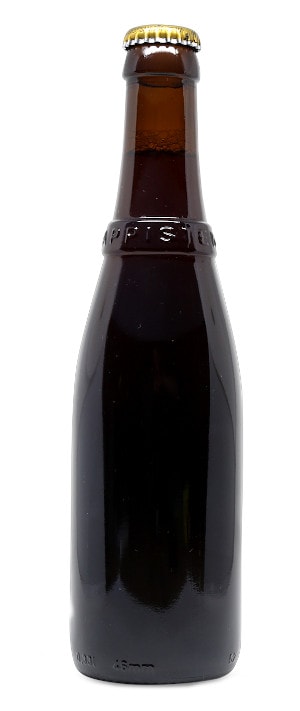
Overview
- Distiller: The Brewery Of Saint-Sixtus Abbey
- ABV: 10.2% (20.4 Proof)
- Country: Belgium
- Colour: Dark amber
Review
Saint-Sixtus Abbey was founded in 1831 when a group of French monks joined hermit Jan-Baptist Victoor in the woods of Westvleteren. To be self-sufficient, the monks would farm the fields around them and also produce cheese. In 1839 the Abbey received its brewers’ license, and production has never ceased.
Trappist Westvleteren 12 is simple by design, using only water, malt barley, hops, sugars and yeast. The beer is neither filtered nor pasteurised and enjoys a secondary fermentation in the bottle for added depth. Dark amber in colour and produces a 1 finger head when poured.
On The Nose
Dried fruits, yeast, molasses, caramel
On The Palate
Begins with rich caramel and burnt brown sugar. The mid-palate becomes fruitier with notes of date, raisins and plum combined with dark, slightly bitter chocolate. The finish is smooth with malt and lingering notes of rum.
Summary
Trappist Westvleteren 12 is a smooth, full-bodied beer with delicate notes of caramel, chocolate and dried fruits. A Trappist beer with a depth that masks its reasonably high alcohol content exceptionally well.

Andrew’s Top Pick

Chimay Blue
My top pick for the best Trappist beer has to be Chimay Blue because of its initial fruity sweetness, spicy middle, and of course, that delightfully smooth and creamy finish.
If you are wondering where I am trying these Trappist beers, I’m at the underground cellar of Le Trappiste located at Kuipersstraat 33, Brugge – Belgium
Trappist Beer Q&A
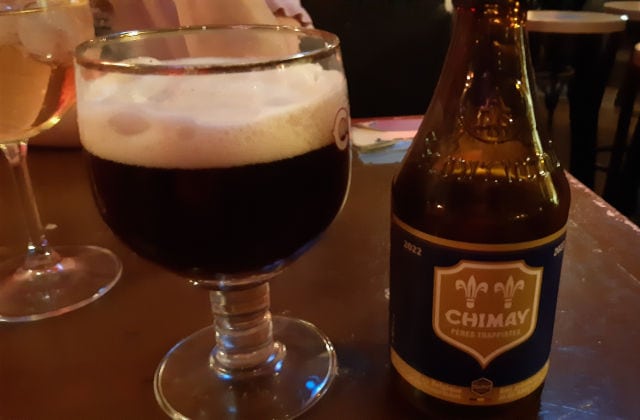
What Is A Trappist Beer?
Trappist beer is typically made from locally sourced malt barley, hops, and water. Like all beers, yeast is added to begin the fermentation process to turn the natural sugars in the barley and hops into alcohol. Many Trappist beers continue to ferment even after bottling.
What Makes A Trappist Beer Authentic?
To be able to bear the label ‘Authentic Trappist Product’, a Trappist beer must be brewed within the walls of a Trappist monastery under the strict supervision of the monks. All proceeds from sales go towards the upkeep of the monastery, the living costs of the monks, plus several charitable causes.
What Does Trappist Mean?
Trappist is a religious order that is officially known as the Order of Cistercians of the Strict Observance. Trappist monks follow the Rule of Saint Benedict that surrounds the ideology of “pray and work”. The order was founded in 1664 by priest Armand Jean le Bouthillier de Rancé at the La Trappe Abbey in Soligny-la-Trappe, Orne, France.
What is the strongest Trappist beer?
Of the Trappist beers I have reviewed, Rochefort 10 Trappist Beer is the strongest, with an ABV of 11.3%.
Conclusion
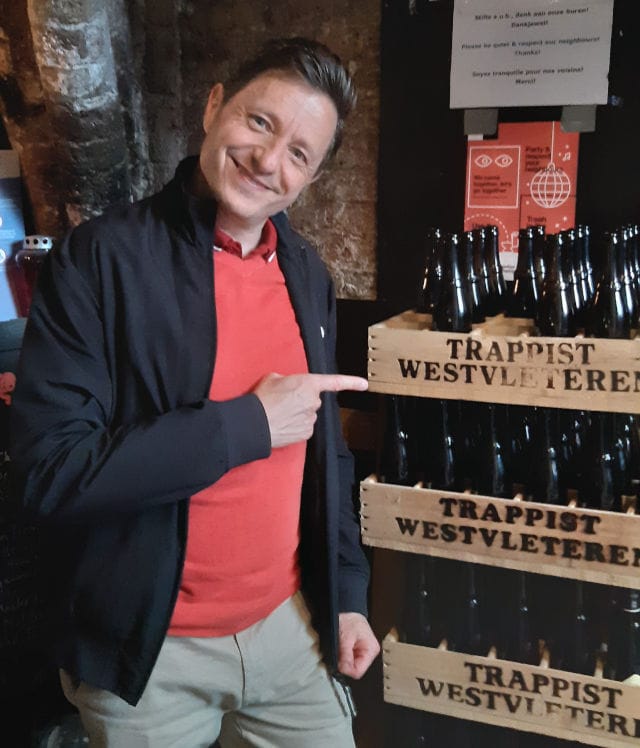
Although many of the best Trappist beers are from Belgium, there are a small but growing number of Trappist breweries further afield. The Spencer Brewery in the USA is one such example of a Trappist brewery that has relatively recently begun its journey into beer making.
The Trappist philosophy of prayer and work aligns perfectly with beer brewing, where hard work, focus, and attention to detail are all key ingredients to achieving a premium product.
Also read: Space Hulk to Gamma Ray: 7 Beavertown Beers To Try
Don’t forget, you can even learn how to brew beer at home with my helpful guide. You may find this excellent Youtube video helpful from Peter Bragiel too.

